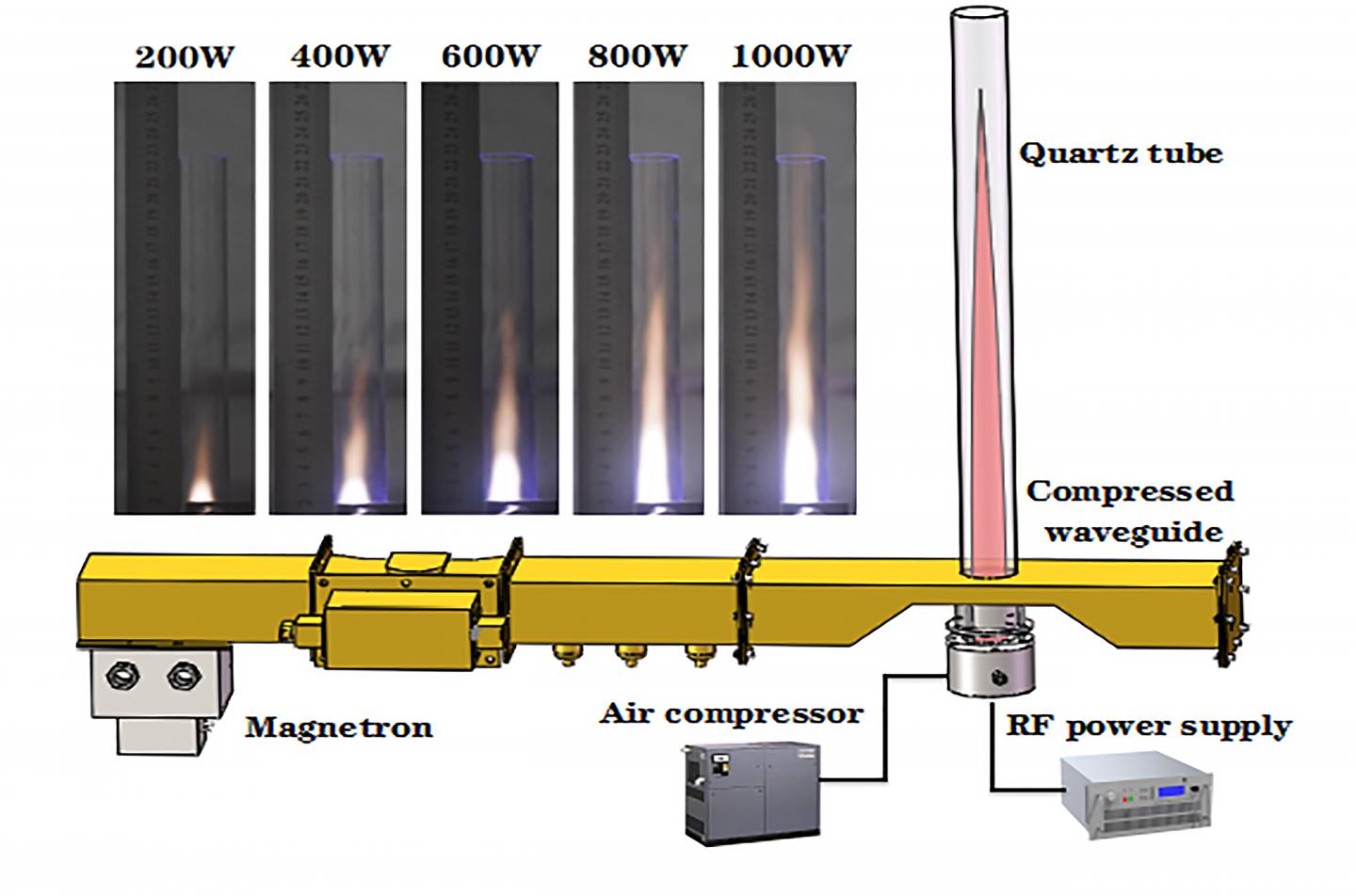Like solids, gases, and liquids, plasma is fourth state of matter found naturally in places like the sun's surface and Earth's lightning. The Institute of Technological Sciences at Wuhan University
say they have created a plasma jet by compressing air into high pressures and using a microwave to ionize the pressurized air stream.
They are not the first to create plasma jet thrusters. NASA's Dawn space probe uses xenon plasma, but those cannot overcome the friction in Earth's atmosphere so are not useful for terrestrial air transportation. The more recent plasma jet thruster generates the high-temperature, high-pressure plasma in situ using only injected air and electricity.

Schematic of the prototype microwave air plasma thruster and the images of the bright plasma jet at different microwave powers. Image: Jau Tang and Jun Li
The device can lift a 1-kilogram steel ball over a 24-millimeter diameter quartz tube, where the high-pressure air is converted into a plasma jet by passing through a microwave ionization chamber. To scale, the corresponding thrusting pressure is comparable to a commercial airplane jet engine. By building a large array of these thrusters with high-power microwave sources, the authors believe the prototype design can be scaled up to a full-sized jet. It will need to be far more efficient to achieve that but a jet engine based on microwave air plasma could one day be a potentially viable alternative to the conventional fossil fuel jet engine.




Comments